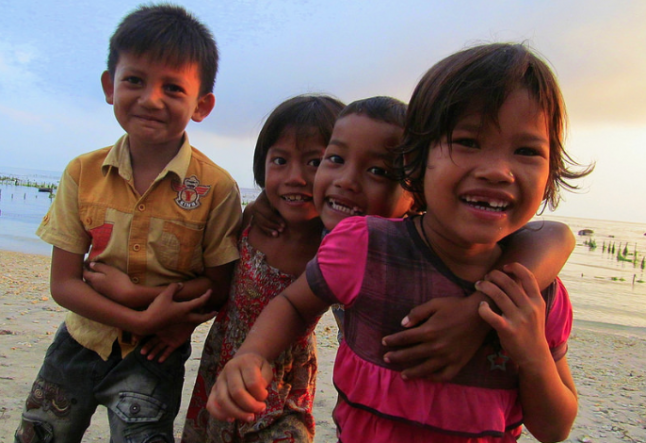the seaweed children

life on nusa penida's coast
Off the south-eastern coast of Bali, a 30-minute fast-boat ride away from the beach town of Sanur, the island of Nusa Penida beckons. A speck of land merely 200 square kilometers in size, with an estimated population of less than 60,000 inhabitants, Nusa Penida is at first glance comprised of a few hours’ worth of navigable roads, temples, caves, old growth forest, rainfall and coastline.
For Balinese Hindus, who regularly flock to its shores dressed in traditional garb, the island is home to one of their holiest sites, Pura Giri Putri, also known as the cave temple. Nusa Penida is also a destination for the occasional traveler heading off the beaten path, seeking to swim with manta rays or to volunteer at one of the local environmental organizations.
The beaches of the northern coast, in many ways remote from the world of temples, eco-lodges and fast boats ferrying passengers to and off the island, are home to the seaweed people. Extensive commercial seaweed farming was introduced in Indonesia thirty years ago, and the local people comprise a segment of the collectors who feed into the industry. The rhythm of their lives flows in parallel to the cycle of their primary crop, seaweed. They talk, live, breathe, eat, work – and probably dream – in shades and colors of seaweed.
Setting out to sea, sometimes in the wee hours of the night, the seaweeders drag large woven bamboo baskets behind them into the shallow waters, kept afloat by the inner tubes onto which they’re placed.
Occasionally, they tie themselves up by rope to the tubes, on the off-chance that the tide will carry away their sole livelihood. Ingenious solutions are spotted everywhere.
The heads of the seaweed pickers are covered in tightly woven conical hats, only partly shading their skin so deeply burnished by the sun. They feel around for shrubs ready for the picking, grabbing hold of a bunch and piling them up into the baskets.
The seaweed children are reared in shacks grouped in tiny communities all along the coast; roaming dogs, baskets and nets sprouting from the sea their constant companions.They are among the most joyful kids I’ve ever met, jostling, posing for the camera and throwing sand at each other.
Their shyness slowly melts away, when an inquiring visitor squats down to their eye level, snapping photos. Moments later, their faces light up when their smiles magically materialize on a tiny screen in front of their eyes.
They may run about in flip flops, soiled dresses, and sun-faded shirts, but poverty doesn’t come to mind when all you see are toothless grins and infectious smiles.
Without family by their side, they won’t stray outside their familiar territory, bordered by invisible boundaries on the beach.
These kids, the next generation of Seaweed People, are reared on sun, water and (mostly) clean air.
What will their lives be like when they too must subsist on earnings from the sale of seaweed? Will they still carry their smiles when laden down with the weight of tubes, baskets and their own kin?
For now, the seaweed children are free of worry. They gaze curiously at the boats speeding by and the haze that fills the skies just beyond, in the direction of the big island. To these kids, most of whom have never set foot on Bali, this neighboring island is nothing but a dream; on a clear day, within sight, but otherwise beyond reach.
healingpilgrim.com
flickr.com/photos/peripatete/sets
Read next >> woman in the world
